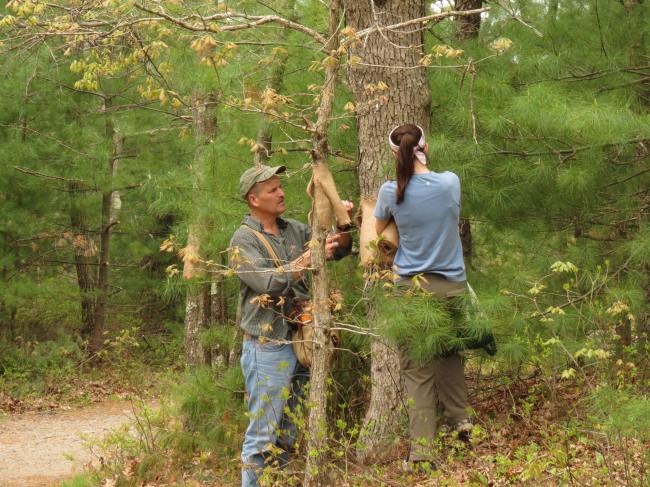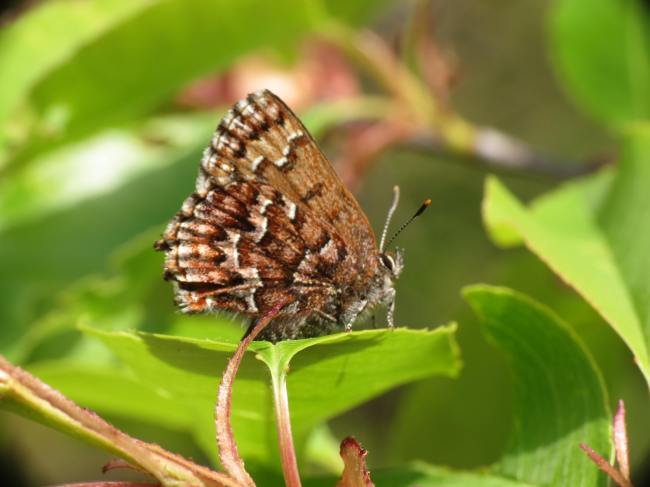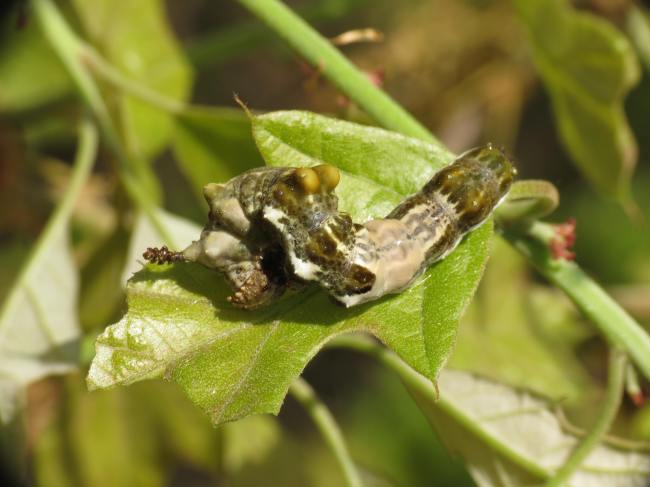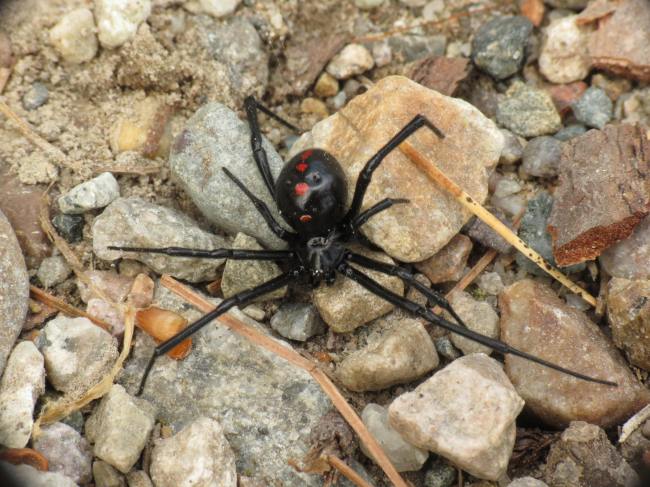We set up the burlap more than two weeks earlier than last year, and I’m quite hopeful it will pay off. Our efforts last spring showed that this is a successful method for sampling oak-feeding hairstreak larvae (see posts from June 1 and June 5). Again, our target was about 150 total trees, all white and red oaks of varying ages/diameters. With two teams of two, we were able to band nearly that many in under 3 hours. The banded trees will be counted and flagged with numbered orange tape tomorrow.
As we tromped through the underbrush, we saw the many tent caterpillars (Malacosoma americana) lazily emerging from their silken strongholds to ravage the cherry trees they were laid on. I also saw about 10 Pine Elfins (Callophrys niphon), 3 Tiger Swallowtails (Papilio glaucus), 2 Black Swallowtails (Papilio polynexes), a good number of Juvenal’s Duskywings (Erynnis juvenalis), 3 Garter snakes (Thamnophis sirtalis) and Kevin chanced upon a late instar Red-spotted Purple larva (Limenitis arthemis) feeding on scrub oak. The most unusual find of the day was a sleek black spider with bright red markings on its abdomen. Could it be?! Yes, a black widow! A Northern Black Widow (Latrodectus variolus) we believe. Not as deadly as its famed and feared southern counterpart (Latrodectus mactans), but still capable of an unpleasant bite. One good reason to watch your step if you venture off the trails.

A cluster of Easter tent caterpillars (Malacosoma americana) feeding on black cherry (Prunus serotina).






